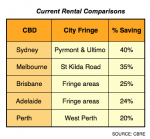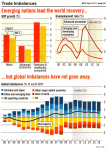 A week or so ago, I briefly explained to you the NABERS “green rating” system, as it relates to Commercial property.
A week or so ago, I briefly explained to you the NABERS “green rating” system, as it relates to Commercial property.
Recent research (undertaken by the Universities of Western Sydney & Maastricht in the Netherlands) has been released by the Australian Property Institute & Property Funds Association of Australia, under the title of Building Better Returns. [Read more…]














